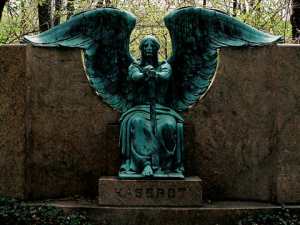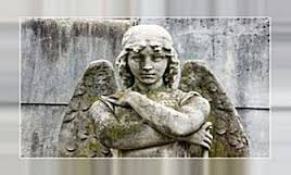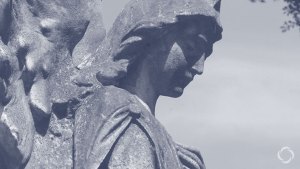Why We Name Names
By Barbra Graber
Sometime in the early 90’s, associate editor of the Mennonite Brethren Herald, James Coggins, was commissioned by a consortium of Mennonite and Brethren in Christ editors to write an article entitled “Should we report scandal in the Mennonite press?” It was printed in the April 1991 issue of MBH. Coggins answers the question with a resounding yes. His reasons for reporting scandal and naming names include these positive outcomes: Warn potential victims Discourage charlatans Enhance the credibility of the church press and the church Demonstrate commitment to the truth Help us remember who we are Coogins goes on to say: “Public sin should be dealt with publicly and doing so would help remove the excessive stigma attached to subjects treated as unsuitable for public discussion which must become suitable. Why do we name the names of church leaders who have violated and betrayed the trust instilled in them by brothers and sisters of their faith communities? Why drag it all back into the open? Why not let it go? Think of their wives and children. Is it really worth all the embarrassment they will feel? We name them because they and no one else committed a gross offense against another of the faithful and got away with it. Any abuse of power, in any form, must be dealt with publicly, swiftly, with termination of duties, and ongoing support for any victims. These decisions can either pave the way toward a truly vibrant, redeemed, and renewed pacifist denomination, or continue to promote denial, complacency and inaction.” — James Coogin, Associate Editor of Mennonite Brethren Herald, 1991 Thank you brother James Coogin, wherever you are! Around the time you were writing these words I was coming to terms with my own history. And around that same time I started putting names of Mennonite predators reported to me in a file. John Howard Yoder was one of those names, in 1985. As I began to speak publicly and identify publicly as a survivor of sexual abuse, more stories and more names found their way to my door. Twenty five years later the same questions Googin speaks of persist. Twenty five years later there are still only a few Mennonites who to my knowledge identify publicly as survivors. The stigma continues and so does the silence. For many of us it is still not safe enough to come forward. Twenty five years later I’m hoping that what I’ve come to learn and understand can be of use to others. I’ve had many teachers, the most recent being David Clohessy, Executive Director of the SNAP (Survivors Network of Those Abused by Priests). His words and wealth of understanding from nearly thirty years with SNAP permeate this post. The privilege and honor I have had and continue to have, to bear witness to and befriend survivors, witnesses, and whistleblowers ready to tell what they have held for years and decades also informs this post. Here’s my attempt to lay out in greater detail, the benefits I believe communities of faith are able to gain from publicly naming admitted and credibly accused predators and those who enable and protect them. When the naming is accompanied by an invitation for those with additional information to come forward, there is greater opportunity for the full truth to be known. When those coming forward are encouraged to go outside the church to an independent agency or group to report, the chances for doubly harmful conflicts of interest can be lessened. For example, the person I’m reporting may have been my pastor’s roommate in college. When the identity of victims, witnesses and whistleblowers are protected at all costs and this too is assured publicly, it follows that those with disturbing things they may have seen, suspected or suffered might also feel safer in coming forward. When we commit to naming names publicly in a central location for all to see, the benefits become the following: healing, prevention, deterrence, reassurance, and a large dose of renewed trust in the credibility of our institutional leaders. HEALING
A public posting of predators offers opportunity to those Mennonites who have already been wounded to finally begin to heal. Somewhere there’s a suicidal 40-something Mennonite man who was raped as a 10 year old boy by an elder in the congregation his Mennonite father pastored. The elder is now dead, but the boy (now grown up) still thinks he was the only one violated. He still believes it was somehow his fault; and his life was forever altered. When our 40-something man sees the name and face of that elder who raped him as a boy on the MAP List, he will know for the first time that he was not the only one. He can begin to understand it was not his fault and that he did nothing wrong. He can now more readily come forward with confidence to tell his story and name his predator. He can find others who understand his pain, who offer him friendship. Or somewhere there’s a Mennonite mother feeling ashamed for being a “bad parent.” Her daughter Sharon has a debilitating eating disorder and her son Clayton is an unemployed alcoholic. She prays earnestly every morning and evening, with Bible on her lap. “Dear God, I’ve obviously done something wrong. Please forgive me.” When she sees Pastor Miller, now in his 80’s, exposed as a predator on the MAP List, she calls her kids and they both acknowledge “Yes, he molested me.” Now the whole family begins to start their recovery. They can stop blaming themselves. As Jesus said, the truth will set us free. PREVENTION
When parents, grandparents, police, prosecutors, congregants and the public have access to a public posting of all church workers, lay or ordained, who have been dismissed from a post for misconduct, they can unite to protect the vulnerable. They can bring even more information forward in order to discover the full truth. Somewhere there’s a woman in an abusive marriage who gets a strange, troubling feeling about the Christian counselor her church recommends she see. She goes online to discover that he indeed lost his license in Washington State but continues to practice under a Christian licensing board in her home state of Oregon. When she tells her pastors of his past record, they try to convince her that he has repented of all that, it happened years ago, and because of his past he might be even more qualified to do the work he does. She knows better, but doubts herself. But now there are people who are able to assure her that her gut has not betrayed her. She can trust her gut. And she can warn others about him. She can report his past to Oregon authorities and professional licensing boards. She can tell her pastors that repeat offenders should not be trusted in work that gives them easy access to vulnerable people in private settings ever again. After a resignation or suspension from a church post, too many offending Mennonite church workers go on to get other jobs inside or outside the church where they still have access to vulnerable children and adults. Meanwhile only a few church insiders know the truth and those few are sworn to secrecy. Critical information concerning the public safety can be held by a few chosen persons in any given congregation or conference. This means young parents might unwittingly invite a reported child molester home to dinner after Sunday service and not even realize a group of people in their congregation know, but aren’t telling them of the risk. A pastor might assume he’s sufficiently trained to provide counsel to a known convicted sex offender and welcome him to services without ever alerting the congregation. Are we ready to realize the reckless risks we take in allowing admitted and credibly accused church workers to move around communities of vulnerable children and adults undetected? How can we allow the same offenders whose offenses were discerned to be dangerous enough to cause a dismissal, the freedom to turn up as coaches, teachers, or Christian counselors–jobs they should not hold–in other locations? There is not a sufficient follow-up system of warning in place to track admitted or credibly accused Mennonite predators once they are dismissed from a post or asked to leave a congregation. The MAP List provides such a system of warning. It puts up their name, photo, and documented offense in a central online location. It helps make the church a healthier place and deters future cover ups. It also provides searchable information for those outside the church. But without the cooperation of Mennonite church members with access to documentation of past dismissals, the MAP List will not succeed. We need your help. DETERRANCE
In order to deter future cover-ups, the MAP List intends to name any Mennonite church official who is discovered to have protected the identities of reported, known, or admitted sexual abusers. Church officials who are shown to endanger others by obstructing justice, destroying evidence, intimidating or manipulating victims, threatening whistleblowers or failing to report to police or other civil authorities any potential criminal behavior will be included on the MAP List. This is not for the purpose of punishment, but prevention of further harm. Supervisors may no longer put their comfort and careers ahead of the safety of the innocent children, youth, and vulnerable adults they serve. REASSURANCE
Knowing the full truth concerning all those present and former church leaders who have past histories of sexual misconduct gives a sense of relief and reassurance to Mennonites across every congregation and conference. Until heads of conferences, agencies and institutions come clean about all complaints filed against former workers, living and dead, Mennonites will continue to look up from the pews at their pastor and wonder “Has he concealed the names of persons in our congregation who have been reported to commit sexual abuse?” And parents sending children to church schools as well as the donors supporting them will wonder “Do the administrators at this school minimize and cover up reported sexual assaults? Do they allow reported predators to walk around campus undetected by others who may become their next victim? Do they realize those in authority over our children must be above suspicion? Do they understand the seriousness and the risk?” Church officials routinely suspend employees when they discover credible accusations of sexual misconduct. But they rarely if ever announce this publicly unless or until a journalist breaks the story and exposes their secret. Many times, there are previous allegations of misconduct in a personnel file. If a church employee is deemed too dangerous to have working in a church agency or institution, then doesn’t the larger church community deserve to know about the allegations? It’s the duty of that employee’s supervisor to warn the public about him and simultaneously invite others with more information to report to an independent outside agency or group. If church institutions dismiss him privately he can continue abusing elsewhere. If he is allowed to continue in his high position, he now has access to more potential victims. When confronted by their church supervisors, offending church workers may lie, blame the victim, or minimize the misconduct. Frequent conflicts of interest (i.e. long time friendships) can cause church supervisors to believe the accused’s story too easily. They may fail to take the matter to police for further investigation. They may fail to ask the tough questions. When offending church workers repent and sorrowfully admit their crimes to their supervisors, or even to whole congregations, they are too often shown premature grace and shielded from public exposure in exchange for a token disciplinary action or internal reconciliation process. This creates several negative consequences: it further manipulates, isolates, and silences the victim it discourages other victims, witnesses and whistleblowers from coming forward it does nothing to warn the public of the risk it allows the abuser to continue abusing undeterred Many known-to-be-at-risk Mennonite pastors, mental health professionals, choir directors, youth leaders, lay leaders, seminarians and other church workers now live – and sometimes work – among unaware, trusting and vulnerable neighbors and colleagues. That’s a reckless recipe for repeated crimes. It is rare for these acts to happen in isolation. Only a trained professional in forensic sex crime interviews and investigations will be able to adequately determine the risk. As seasoned law enforcement professional Michal V. Johnson points out in a speech at William and Mitchell College of Law: “One of the things that has taken place and we are crystal clear about is that it used to be ‘innocent until proven guilty’. Now we are going to remove you and you are going to have to prove to us that you didn’t do this thing. Our mantra is going to be we are going to err on the side of protecting the vulnerable. You do not have the right to be [in this job] if there is even a suspicion that you are endangering those we serve…. We are not interested in whether you are a mandatory reporter by law or not. If you suspect that there is a possibility of abuse you need to report it. If law enforcement doesn’t do anything then they don’t but we have done our duty and reported it.” CREDIBILITY
Finally, we publish names because it’s what the Mennonite church and its institutions and agencies have repeatedly pledged for decades to do: hold abusers accountable to protect those they have been ordained or commissioned to serve. The Church Wide Statement on Sexual Abuse adopted by delegates at the 2015 MC USA Convention in Kansas City pledges: We resolve to tell the truth about sexual abuse; hold abusers accountable; acknowledge the seriousness of their sin; listen with care to those who have been wounded; protect vulnerable persons from injury; work restoratively for justice; and hold out hope that wounds will be healed… The recent statement released on March 30, 2016 from the Panel on Sexual Abuse Prevention appointed by Mennonite Church USA in 2015 states: “Sexualized violence (abuse, rape, molestation, harassment) affects people within our churches and institutions and our families at the same rate as society at large. And we have a history of ignoring it, not paying attention and even dismissing it. However, the Panel on Sexual Abuse Prevention will not take part in the enabling of the harm and violence by keeping silent…Sexualized violence is cancer within the church that we need to expose. In order to become whole, we must bring to light all that has been too long hidden in the shadows.” To this end, we ask all Mennonite church agencies and institutions to publicly post the names of all credibly accused* church workers, living or dead, who have been dismissed from a post for any type of sexual misconduct. Or we ask any who work in those agencies and institutions to send those names and applicable information or documentation to mennonite@snapnetwork.org. Documentation may also be sent confidentially in an unmarked envelope to our post office box at this address: MAP List, P.O. Box 442632, Lawrence, KS, 66044. The identity of our sources will be kept in the strictest confidence. Today, in 2016, James Coogin’s words published 25 years ago still resonate: These decisions can either pave the way toward a truly vibrant, redeemed, and renewed pacifist denomination, or continue to promote denial, complacency and inaction. But back to that file of names begun 25 years ago; the file that burned a hole in my heart each time I added another name. That file would never have become a MAP List were it not for the work of so many others. Had it not been for Ruth Krall, Carolyn Heggen and other early trail blazers, we would not be here today. A MAP List would not have happened without the good people of SNAP. They offered a home on their website at snapnetwork.org, not to mention giving us the idea of creating our own list in the first place. The MAP List would not have happened without researcher Stephanie Krehbiel, who now administers the list, Tim Nafziger who has offered ongoing consultation from the beginning, and all of the dedicated people of SNAP Mennonite who agreed to support this venture. To meet the standard of credibly accused*, and for the MAP List to post a name publicly, a church worker must be documented to be federally charged, civilly sued, named for the offense in a media article from an established news outlet (not blogs), or dismissed from a post. This is why we must work diligently to make it safer for victims, witnesses and whistleblowers to come forward to outside, independent agencies and groups. The beginning of healing is the breaking of silence. The beginning of prevention is the public naming of credibly accused perpetrators. Here’s to healing the wounded and protecting the vulnerable by preventing the abuse. Let’s do this. Let’s become the fierce guardians we are called to be.
|
.
Any original material on these pages is copyright © BishopAccountability.org 2004. Reproduce freely with attribution.
![“It is very tempting to take the side of the perpetrator. All the perpetrator asks is that the bystander do nothing. [The perpetrator] appeals to the universal desire to see, hear and speak no evil. The victim, on the contrary, asks the bystander to share the burden of pain. The victim demands action, engagement and remembering.”](../images16/2016_08_18_Graber_WhyWe_ph_tempting.jpg )




